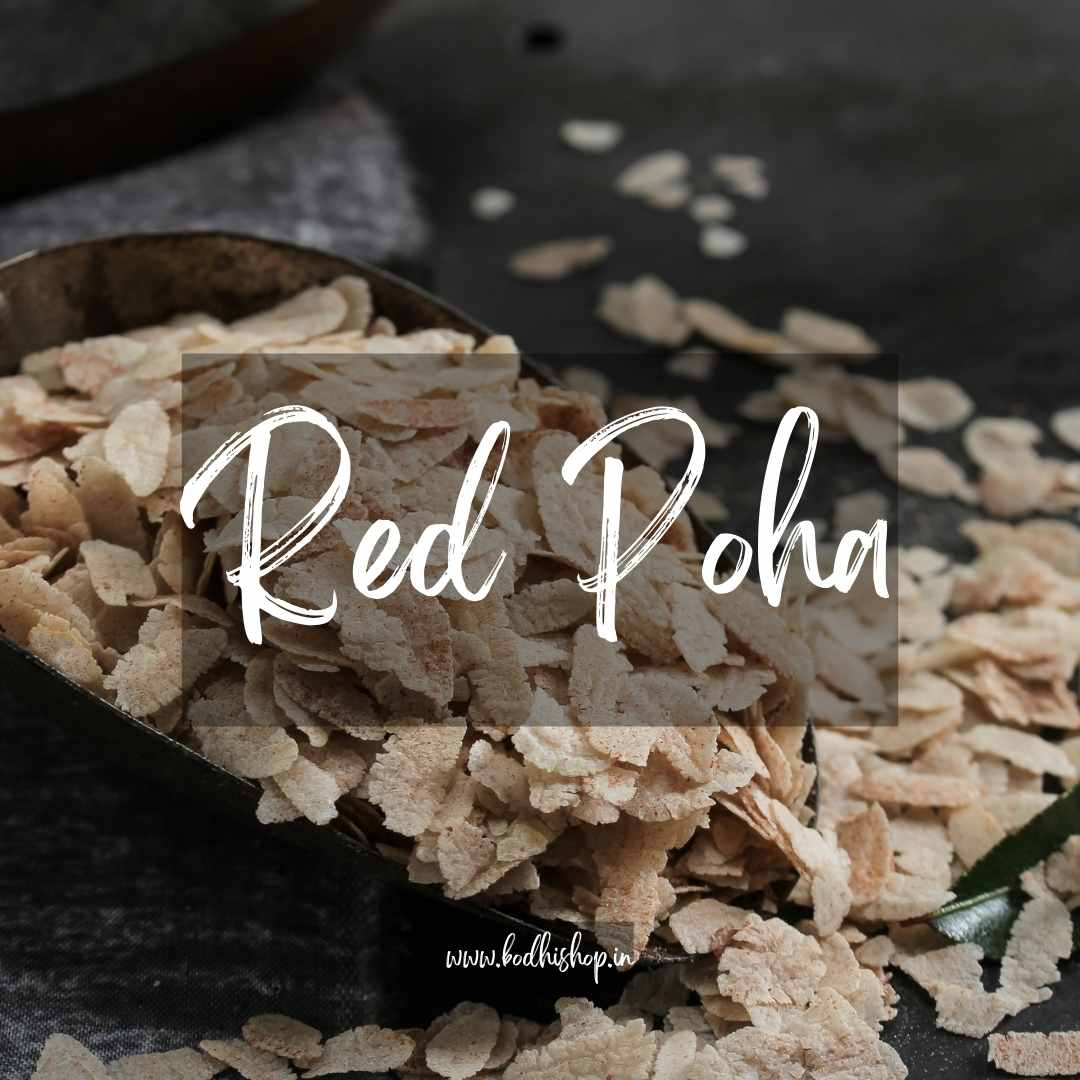
What is Red Poha? Benefits, Calories & Nutritional Value,Vs White
Share
In the diverse landscape of Indian cuisine, red poha stands out as a nutritional powerhouse, offering a healthier twist to the traditional flattened rice. Known for its vibrant hue and distinct taste, red poha has become a popular choice for breakfast and snacks. In this article, we will explore the origins, nutritional value, and health benefits of red poha and how red poha is better than the white one.
Red Poha: A Flavonoid-Rich Delight
Origins and Processing
Red poha, also referred to as flattened rice or beaten rice, undergoes a unique parboiling and drying process, resulting in delicate flakes. The deep red color of red poha is attributed to the presence of anthocyanin, a powerful flavonoid known for its anti-inflammatory properties.
Healthier Twist to Indian Cuisine
Red poha has seamlessly integrated into Indian cuisine, offering a nutritious alternative for breakfast and snacks. Its versatility allows for various culinary experiments, making it an essential ingredient in many households.
Nutritional Value of Poha
Essential Nutrients
Red poha brings more than just color to the plate; it packs a nutritional punch. Let's delve into its nutritional components and the value it adds to your daily diet.
Anthocyanin and Flavonoid Content
The deep red hue of red poha is not just visually appealing; it signifies the presence of anthocyanin and flavonoids. These compounds are potent antioxidants with anti-inflammatory properties, contributing to overall well-being.
Controlled Calorie Content
Understanding the calorie content of red poha is crucial for those mindful of their dietary intake. On average, red poha contains a moderate amount of calories, making it a suitable choice for those aiming to manage their weight.
Carbohydrates for Energy
Red poha is a rich source of carbohydrates, providing a natural energy boost. Its complex carbohydrates contribute to sustained energy release, making it an ideal option for breakfast or a midday snack.
Vitamins and Minerals
In addition to its vibrant color, red poha boasts a range of vitamins and minerals. These include essential nutrients that play a key role in supporting immunity, energy production, and overall health.
Red Poha vs. White Poha: Unraveling the Differences
One common question that arises is how red poha differs from its white counterpart. The primary distinction lies in the processing and nutritional content. While both types undergo parboiling and flattening, red poha's red hue is indicative of its higher anthocyanin and flavonoid content, offering additional health benefits.
Frequently Asked Questions (FAQs)
How is red poha different from white poha?
Red poha differs from white poha in its processing and nutritional content. The red hue of red poha comes from anthocyanin, a flavonoid with anti-inflammatory properties, making it a healthier choice.
Which kind of poha is best?
The choice between red and white poha depends on individual preferences and dietary needs. Red poha's higher nutritional content makes it a popular choice for those seeking added health benefits.
What is the GI of red poha?
Red poha has a moderate glycemic index (GI), making it a suitable option for those aiming to control blood sugar levels. However, individual responses may vary.
Does poha have any nutritional value?
Yes, poha, including red poha, has nutritional value. It contains essential nutrients such as carbohydrates, vitamins, minerals, and antioxidants, contributing to overall health.
Is poha healthier than rice?
Poha offers a healthier twist compared to white rice. Its lower calorie content, higher fiber, and additional nutrients make it a nutritious alternative.
What are the benefits of poha?
Poha, including red poha, offers numerous benefits such as sustained energy release, antioxidant properties, and support for overall well-being.
Is it OK to eat poha daily?
Consuming poha daily can be part of a balanced diet. However, moderation and variety in food choices are essential for overall nutritional balance.
Which is better oats or poha?
The choice between oats and poha depends on individual preferences and dietary requirements. Both can be healthy options when incorporated into a balanced diet. However, poha is an excellent native option that is easier to digest and tastes far better than bland oats.
What are the disadvantages of poha?
While poha is a nutritious choice, it's essential to be mindful of portion sizes. Excessive consumption may lead to an imbalance in nutrient intake.
Conclusion
Incorporating red poha into your diet can be a flavorful and nutritious choice. Its unique color, combined with health benefits, adds vibrancy to Indian cuisine. Whether enjoyed as a breakfast staple or a wholesome snack, red poha brings a healthier twist to the traditional flattened rice, enriching your culinary experience.
For those interested in exploring high-quality organic red poha, Gokheti offers a premium selection that aligns with your health and wellness goals.
Discover the goodness of red poha and elevate your culinary journey with this nutritious and delicious ingredient.
Disclaimer: This content provides generic information only and is not a substitute for qualified medical advice. Always consult with a healthcare professional for personalized guidance.
Note: The mentioned brands are for illustrative purposes, and it's advisable to explore and choose products that align with your preferences and dietary requirements.
